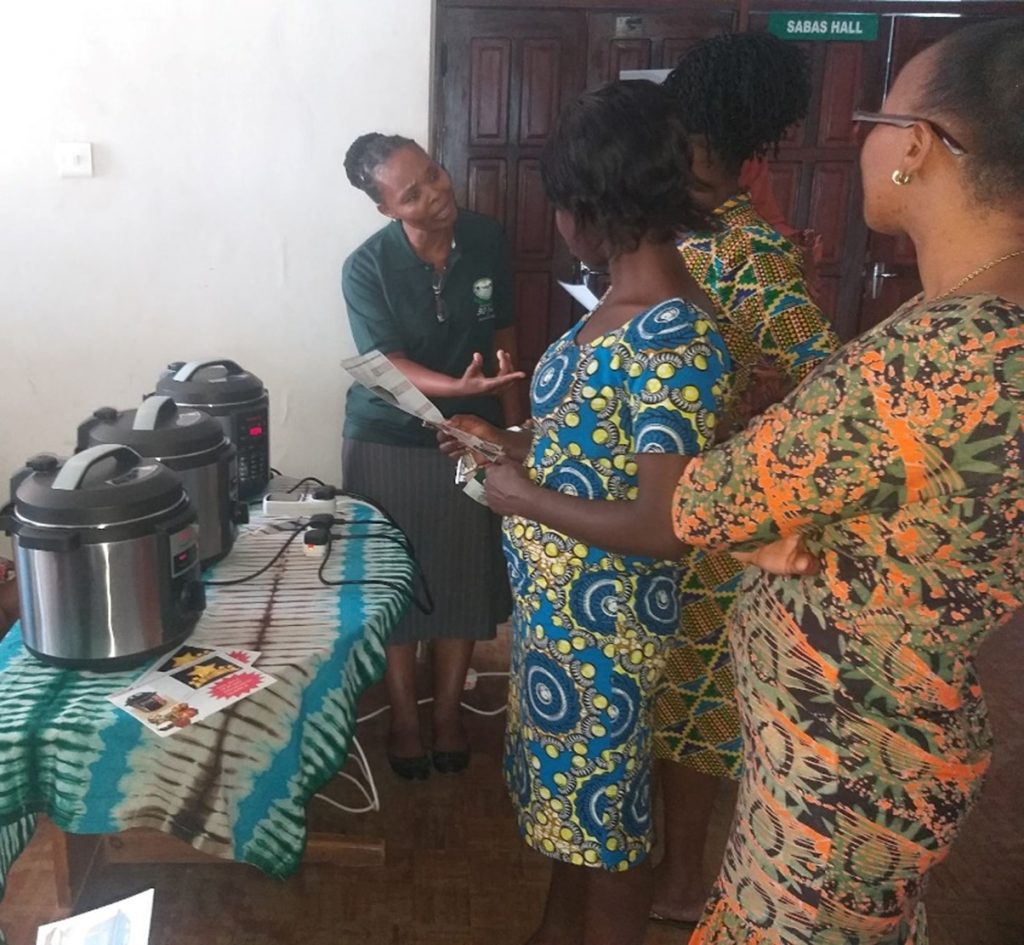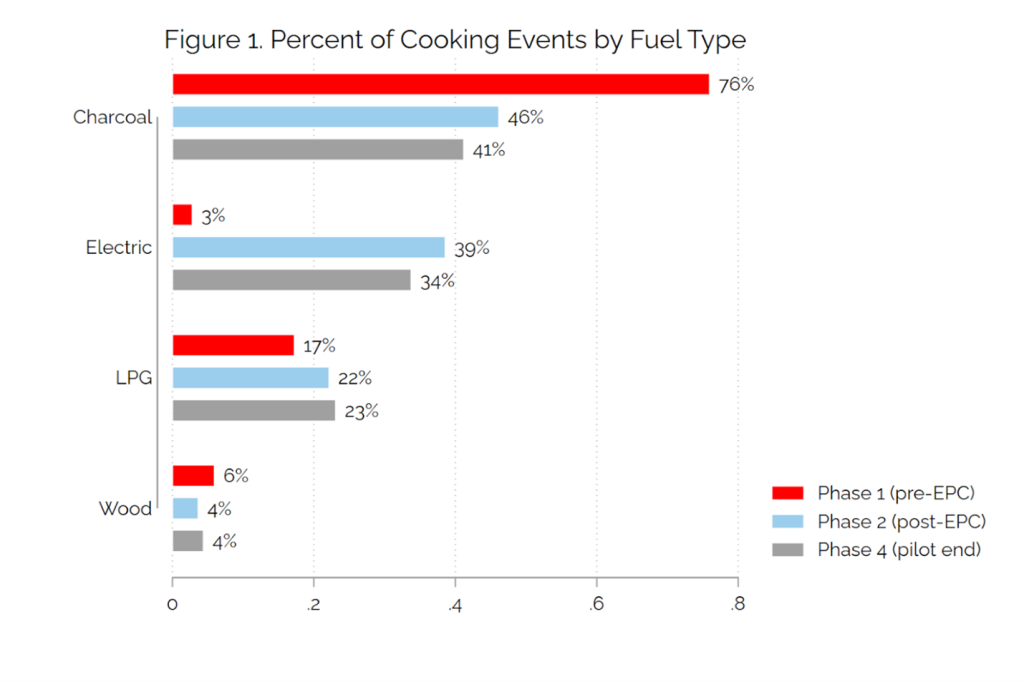
- Date
- 23rd December 2021
- Categories
By Megan Bomba (Nexleaf Analytics), Chelestino Balama (TAFORI), Mary Swai (SESCOM), Richard Sieff (Loughborough University), Eric Wright (Nexleaf Analytics).
A recent MECS-ECO (Electric Cooking Outreach) pilot project has added to the body of evidence of how electric pressure cookers (EPCs) could enable transitions to cooking with electricity. Following in the footsteps of several other pilot projects involving EPCs, the project aimed to understand how EPCs would be received by grid-connected households in Morogoro Municipality, Tanzania. The project distributed EPCs to 50 households and evaluated EPC use with cooking diaries, data loggers, and feedback surveys on customer experience, while also assessing appliance financing models. The project was led by the Sustainable Energy Services Company (SESCOM), with implementation from the Tanzania Forestry Research Institute (TAFORI) and data analysis from Nexleaf Analytics.
Other studies have demonstrated that Tanzanian foods can be successfully cooked using an EPC, and that the EPCs also have potential within micro and mini grid systems, depending on price point and power availability. However, grid-connected households (as focussed on in this study) are also an important potential market for EPCs, especially as the impacts of charcoal use in cities increases and countries aim to achieve universal electrification access.

Electricity as an alternative to charcoal
Results from the cooking diaries showed a noteworthy shift in the cooking fuel “stack” among participating households with the introduction of the EPC, which was sustained throughout the course of the 6 month pilot (Figure 1). At the outset of the pilot, charcoal was the fuel of choice for 76% of cooking events, and electricity only accounted for 3% (use deriving from electric kettles, rice cookers, and microwaves). After introduction of the EPCs, charcoal use dropped to 46% of events, with electricity climbing to 39%. Choice of LPG interestingly also increased slightly after EPC introduction, from 17% to 23% of cooking events.

The shift in fuel choice was particularly noticeable when cooking certain food types. Rice and beans, for instance, shifted from foods cooked primarily with charcoal to being cooked nearly half the time with electricity (Figure 2). While the menu didn’t change after the introduction of EPCs, households reported cooking more foods from scratch as opposed to reheating foods. These trends indicate that EPCs can enable electricity to be a viable fuel choice for grid connected households.

Scaling up eCooking: usage patterns and power supply
In order for electric cooking (eCooking) to expand, utilities must be able to plan for adequate power supply for communities, and systems must be built for households to afford the cookers. Usage patterns from the 50 households showed clear trends towards increased cooking on EPCs for preparation of the evening meal, with average energy consumption at 6pm nearly double that at midday (Figure 3). While none of the 50 households participating in the study reported power quality or loss of power affecting their ability to cook, patterns of usage have implications on a large scale if electric cooking appliances are part of mass clean cooking campaigns or agendas.

Scaling up eCooking: financing models
Scale up is also likely to be dependent on providing opportunities to accelerate distribution of EPCs to households unable or reluctant to pay the upfront costs of the cooker. The project tested appliance financing models which allowed for customers to pay for EPCs in instalments. Two microfinance organizations (a women employee micro financing facility and the University Graduate Entrepreneurs Cooperative) purchased EPCs at wholesale price from SESCOM and then sold to customers for payments in instalments. The scheme was more successful among members of the women employee microfinancing facility as all EPC recipients were employed and had a stream of income to make the recurring payments. This suggests sales are more likely to be viable with other microfinancing social groups in Morogoro with consistent cash flows.
What’s next: making potential a reality
There is now a strong base of evidence highlighting the potential of EPCs in the Tanzanian context, with the results of pilots such as these indicating that for those with electricity access, EPCs offer an appealing alternative to charcoal. Yet, in Morogoro, just 28.4% of households are connected to the electrical grid, below the national rate of 37.7%. This indicates that urgent action is required to integrate electrification and clean cooking policy to enable more households access to electricity and the eCooking opportunities this access can provide, with this study adding to the clear evidence base informing policy makers and utility providers of the need to build an electrical supply that can accommodate electric cooking at scale. To enable more equitable and inclusive transitions to electric cooking (e.g. to low income households), further research is required to build on the findings of this study and better understand how to advance the provision of adequate electricity and end-user financing and distribution.
For more information on this study, the SESCOM ECO final report is available on the MECS website.
Featured image, top: Women in Morogoro, Tanzania practicing cooking with EPCs (image credit: Mary Swai, SESCOM, July 2021).